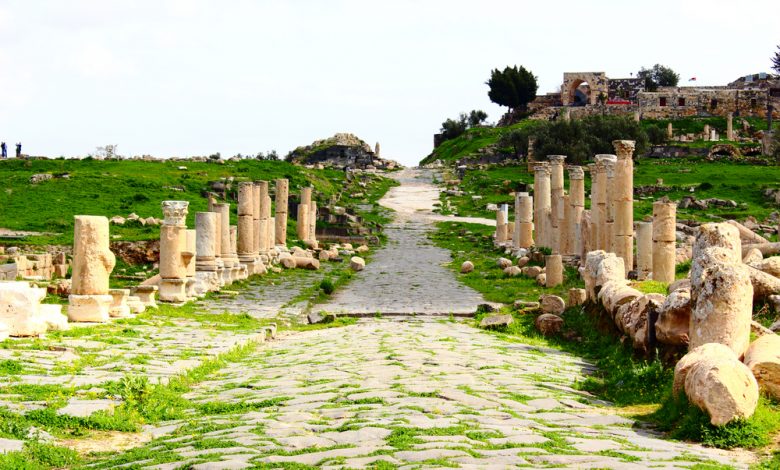
Jordan Daily – Women and men in safety vests, equipped with face masks, secured by ropes while working on a prehistoric tell in North Jordan: This exceptional scenery is currently presented to visitors of Tall Zirāʿa in the valley of Wadi el-Arab close to the border between Jordan, Israel and Syria and south of the Sea of Galilee.
Since 2001 the German Protestant Institute for Archaeology (GPIA, German DEIAHL) has carried out extensive excavations at the site. Currently, a major socio -archaeological experiment is conducted here under patronage of UNESCO and the International Labor Organisation (ILO) and in cooperation with the Jordan Department of Antiquities (DoA).
240 Syrian refugees and Jordanians, both men and women, are working to secure and strengthen the cultural and economical potential of two important monument sites: Tall Zirāʿa and the ancient city of Gadara, known today as Umm Qays , according to a statement by the German Embassy in Amman.
This project is funded by the European Union (via the Madad-trust fund as a reaction towards the Syrian crisis) as part of a design to facilitate livelihoods and employment through the development and enhancement of cultural heritage in the Northern Jordan governorates Mafraq, Irbid and Ajloun.
Concept, realisation and on-site supervision are the responsibility of two German specialists: Dr. Katharina Schmidt, archaeologist for the ancient near east (GPIA, German DEIAHL), and Dr. Frank Andraschko, a specialist for regional developments based on characteristics of cultured landscapes (Archaeological Department of the University of Hamburg/project “Regiobranding”; AGIL).
Tall Zirāʿa is a more than 5000 years old settlement mound and highly endangered: Like many other archaeological sites it is subject to increasing destruction and erosion in the course of heavy rainfalls also caused by climate change.
Due to this the vertical edges of the tell are now bevelled to minimise the dangers of collapse and erosion and to provide long-term protection for this unique monument. This is happening in cooperation with the German-Jordanian University (GJU) as part of an intensive employment measure and guarantees both the close archaeological supervision for the removal of sediments and layers as well as the creation of new infrastructures for ecotourism on the adjacent “Jordan Trail”. It is the first time throughout the world that an archaeological settlement hill is treated this way.
The measures undertaken in the ancient city of Gadara, located 300m above the valley, pursue a similar goal. Gadara, which is already mentioned in the Bible, belongs to the most important archaeological sites of Jordan today.
Time takes its toll on this cultural heritage site, and so does the exposure to touristic use. For instance plants have spread in the joints of the ancient Roman road, which has been preserved in its original state over the length of one kilometre.
The pressure generated by their roots slowly destroys the structure of the pavement and thus the ancient street itself. To prevent this, the joints are now cleaned manually and then grouted anew with mortar specifically designed to fit the characteristics of this monument. Another essential activity within the intensive employment measure is the construction of pathways on the site, whose territory measures 1,5 km² in total.
These pathways are also created without machines in order to preserve archaeological layers and nature. At the same time traditional handicrafts such as drywall building as part of the immaterial cultural heritage are sustained and promoted. These interventions create new hiking paths and resting places for visitors as well as drainage systems to protect the site from large amounts of rainwater in winter.
Next to the preservation and conservation of the ancient sites, Schmidt and Andraschko state their main motivation: “We are on site to see if everything is going well, to learn what we can do better and to develop ideas to transfer this concept to other excavation sites. One of our main interests is the connection between history and present with a focus on the future. We want to inspire people’s enthusiasm for their cultural identity and their cultural heritage. Often locals are the people least interested in what archaeologists find right under their noses, both in Germany and in the Near East. This is where we would like to start.” The project ends in January of 2022, a possible continuation of the successful measure is currently being discussed.

